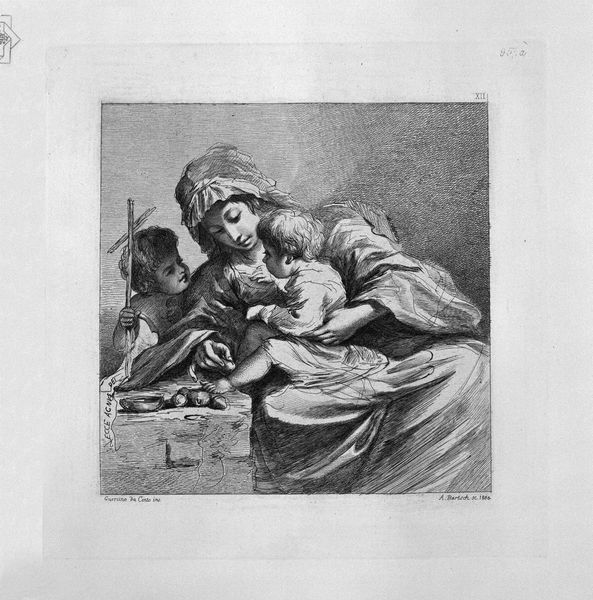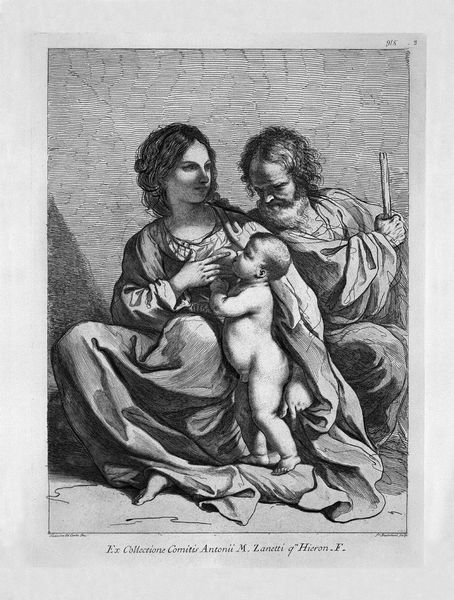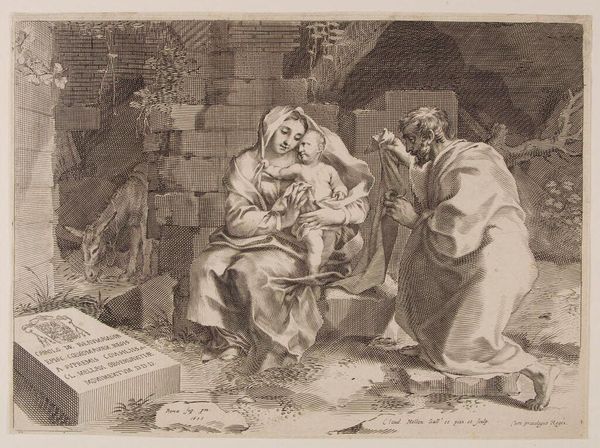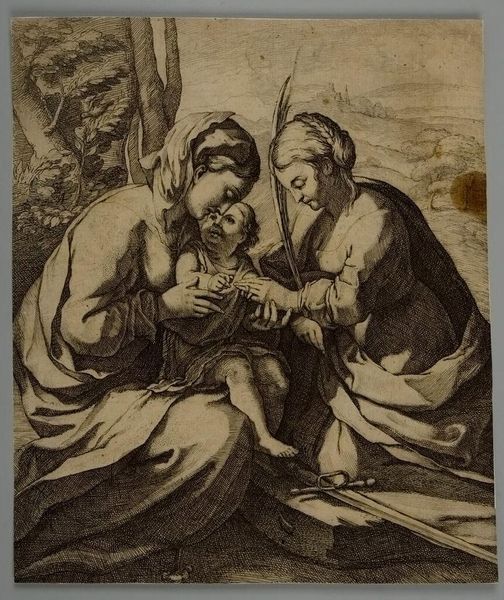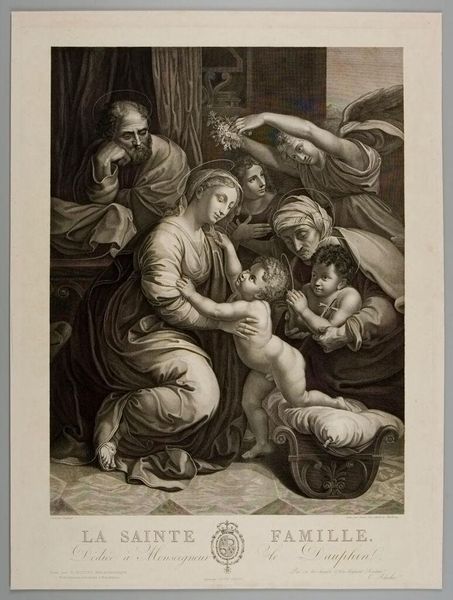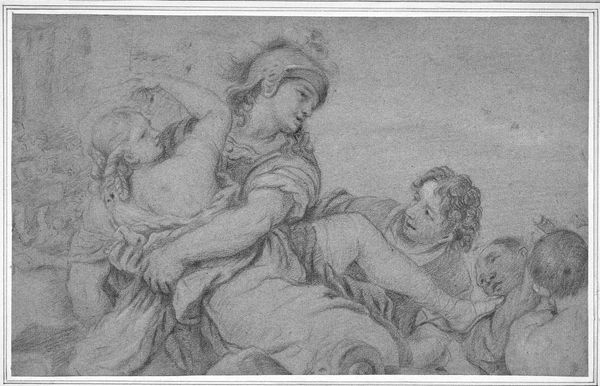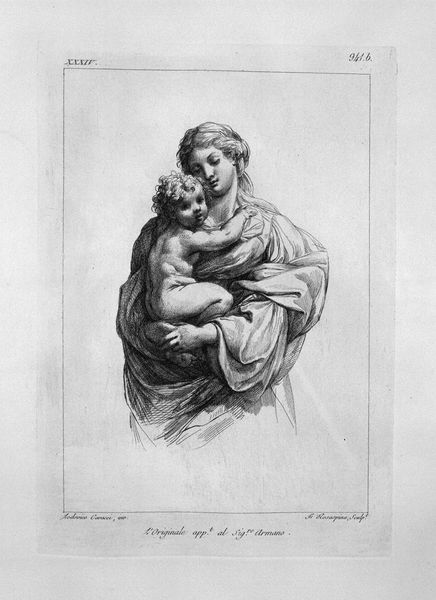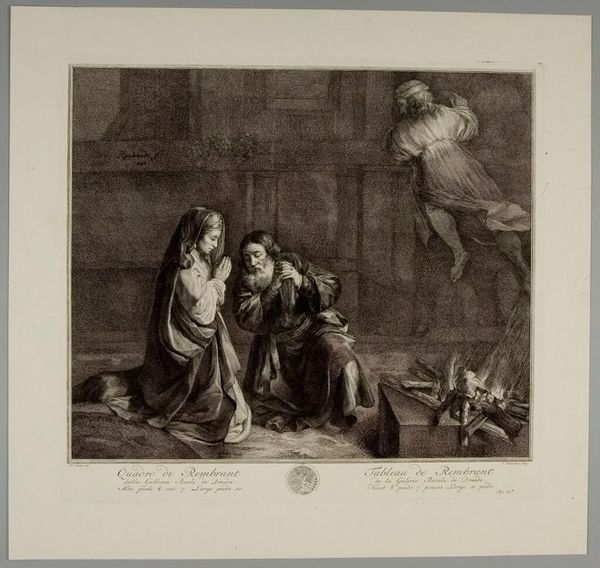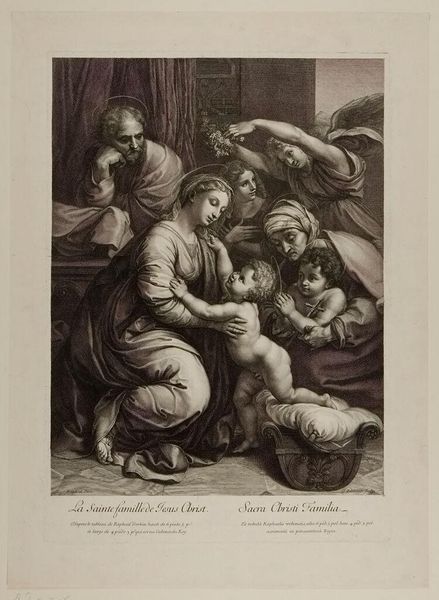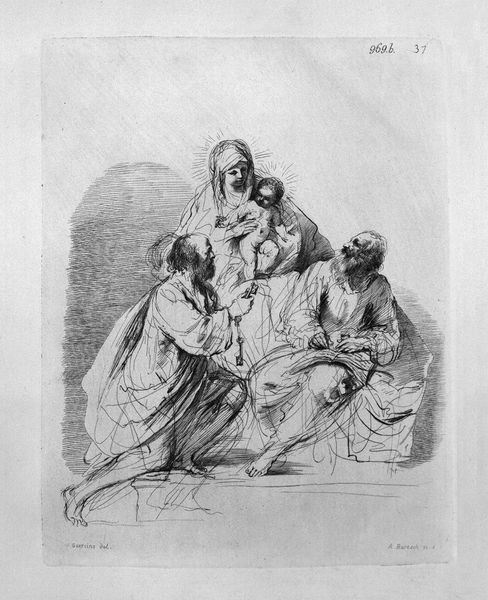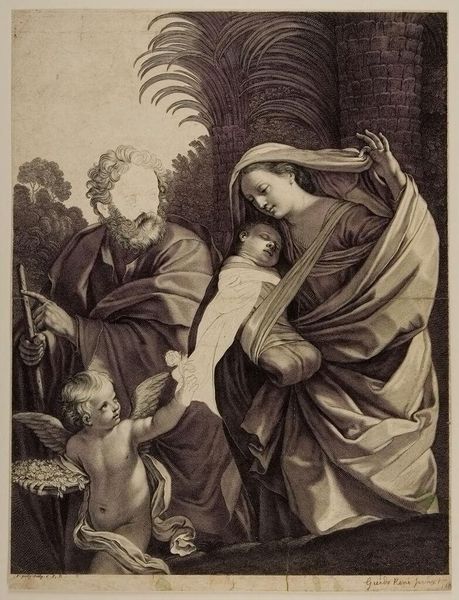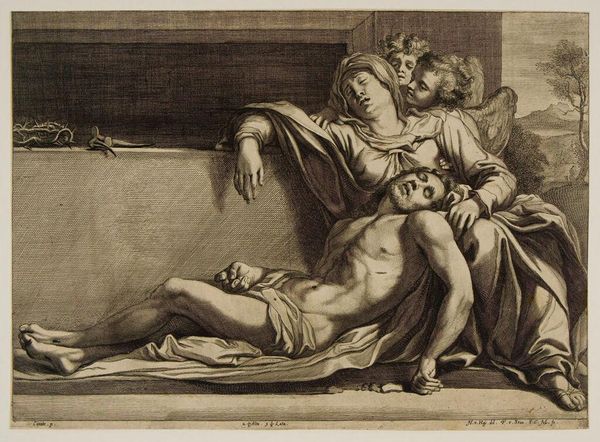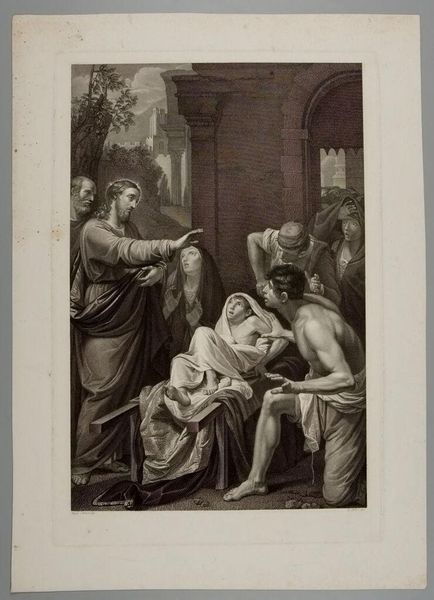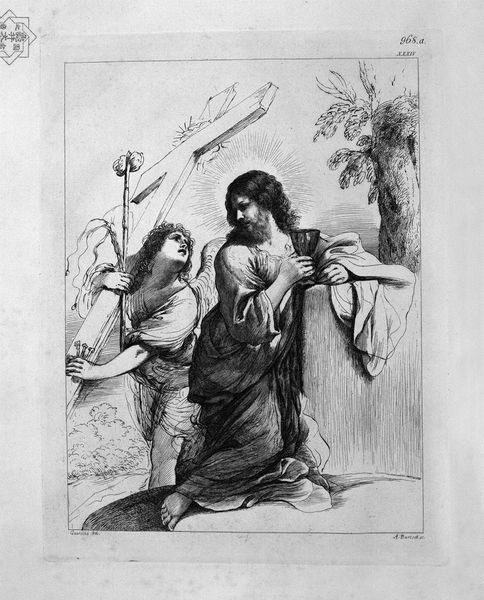
print, engraving
#
baroque
# print
#
figuration
#
line
#
history-painting
#
engraving
Copyright: Public domain
Curator: Let’s discuss this compelling engraving, "St. Anne, the Virgin and Child Jesus" by Giovanni Battista Piranesi. What strikes you initially? Editor: The starkness of the engraving immediately sets a somber tone. There’s an intensity in the line work, especially around the faces, that conveys a sense of gravity. Look at the geometric planes used to render form in pure black and white; such a deliberate approach creates stark visual drama. Curator: It is certainly evocative. Considering the context of religious art at the time, and situating this piece within the broader discussion about power structures—namely, the male gaze—we have to ask: who does this iconography really serve? How are women being represented and for whose benefit? Editor: That’s an interesting lens. Though I see instead the meticulous detail in the rendering of fabrics, the contrast between the flowing drapery and the sharp, architectural lines in the background create a pleasing visual dynamic. It makes you think about line and form first before its underlying messages. Curator: And yet, that architectural context is crucial. Are we viewing women as structural supports of church history? Are their identities, experiences, merely foundations for something ‘greater’? The way the female figures are gazing at the child reinforces established narrative that places the family and the reproduction within structures of power. Editor: Perhaps, but the composition has real formal strength. Consider the positioning of the figures in relation to each other. A close look at the arrangement shows how each shape affects the whole through size, and tonal placement: St. Anne almost a pyramid providing solidity to the other two shapes in the triangular structure. This provides an intriguing and satisfying overall experience of unity within form. Curator: Well, while you focus on the lines and shapes, let's not disregard the powerful historical dimensions and the role these figures and compositions have played in legitimizing, in a symbolic register, a status quo based on an uneven power dynamics. It may appear beautiful from an aesthetical perspective, but this comes with deep societal costs and ramifications. Editor: I recognize that the thematic significance is important. The way that line is used adds emotional depth to its societal critique, I can see both viewpoints represented, formal unity and thematic intent working together. Thank you for this perspective! Curator: Thank you for this wonderful engagement with Piranesi’s composition!
Comments
No comments
Be the first to comment and join the conversation on the ultimate creative platform.
